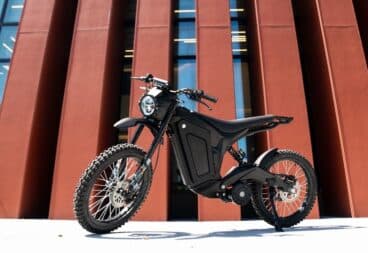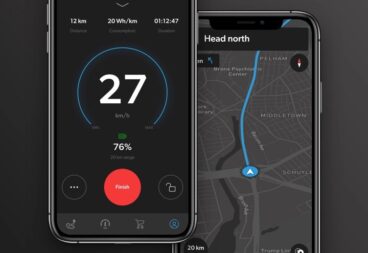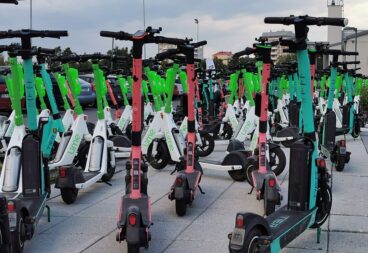Take the pledge to travel by electric scooter on those good weather days for a cleaner, better world
Most people in the United States still consider electric scooters a novelty rather than a practical form of transportation, but why is that?
What the Average American Commute Looks Like
Some may say a scooter won’t work because their destination is too far away, but 50% of all trips that we take in a car are 4 miles or less. So why don’t more people travel by electric scooter, when it gets you out of gridlock traffic and allows you to enjoy the great outdoors?
If it’s because we need the space for other people, that’s not a daily occurrence, as 85% of all car trips involve one passenger (the driver). And that 1.6 ton car that you’re driving around in will need a parking space, insurance, and regular maintenance, and you’ll need a license to operate it.
Other than an electrical socket, some maintenance, safety gear and scootering know-how, there’s little else you need to jump on your scooter and go.
All of the scooters that we’ve tested can make a 4 mile trip (albeit a slow ride on some), and weigh between 1% to 3% of a car, meaning they take up a lot less space and are more appropriate for you to handle (read: you can’t physically pick up your car if it stops working, but you can pick up your scooter).
How Commuting by Electric Scooter vs. Car Impacts the Environment
There are approximately 1.4 billion cars in the world. If only 5% (or 70 million cars) chose to travel by electric scooter instead of by car for their daily commute, they would reduce carbon emissions by 2.1 billion tons per year.
Based on this 2018 report from the EPA, transportation is the largest source of greenhouse gas emissions, accounting for more than one-third of all carbon dioxide emissions in the United States.
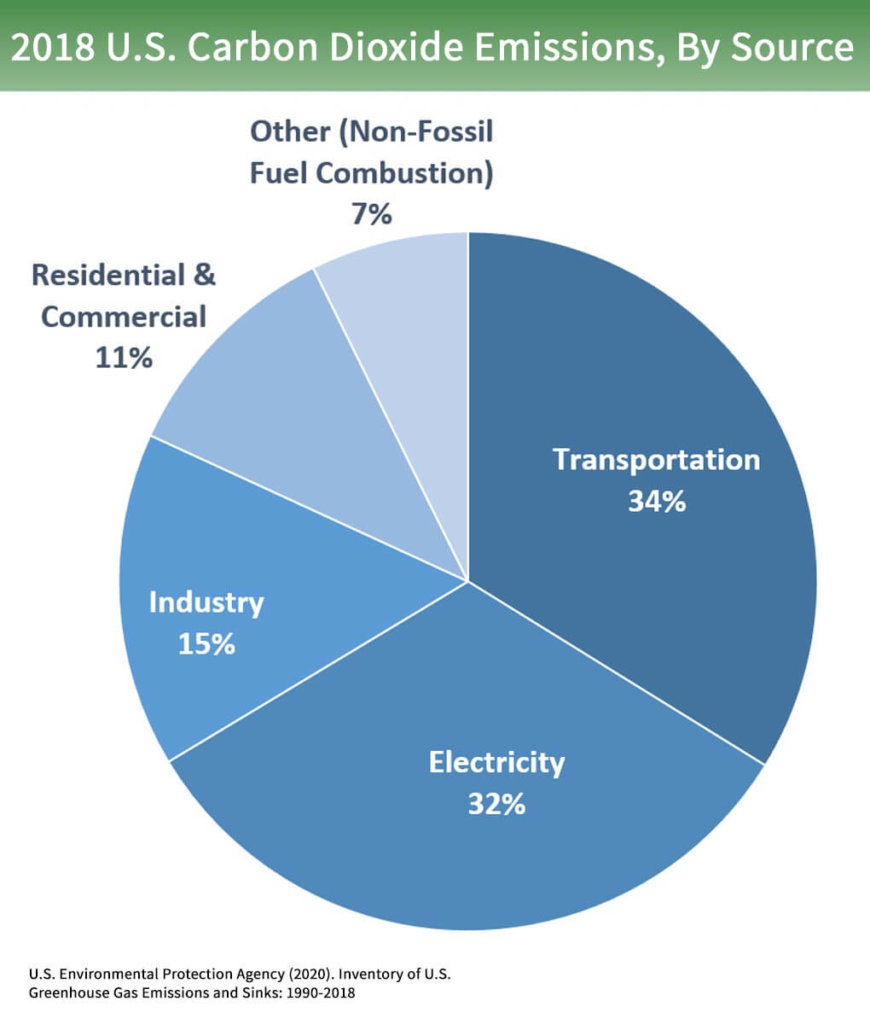
According to Just Imagine, the average American commute is 6 miles (one way), with the driver spending about 30 minutes in the car, driving and idling in traffic.
That means the average daily round-trip commute is 12 miles for around 60 minutes, which amounts to around 88 lbs of carbon dioxide emissions per day in a car. For the same distance, an electric scooter produces only 1 lb of carbon dioxide emissions per day. That’s 88 times less energy to travel by scooter than car.
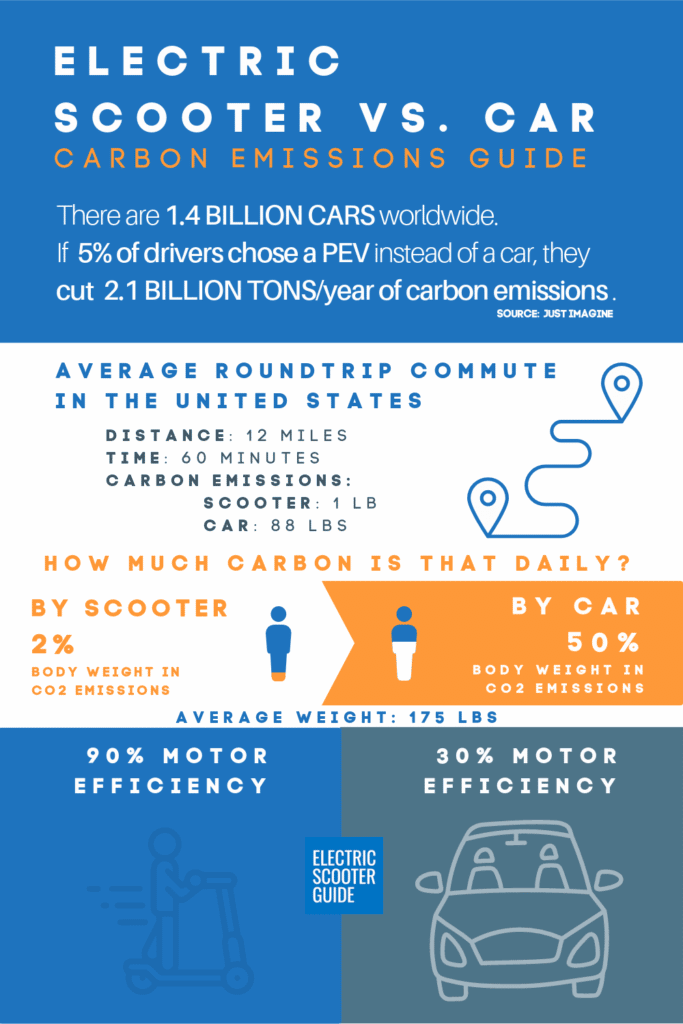
Share this Image On Your Site
In addition, cars with combustion motors are far less efficient at “converting the embodied energy in the fuel into kinetic energy in the wheels… with only 30% translated into forward motion”. Electric motors, on the other hand, are far more efficient, “with 90% of the onboard energy being converted to forward motion.”
So like Just Imagine says in the video, ask yourself,
“If you could get to work for just 10 cents a day, with no emissions, no traffic jams, no parking issues, no contagions, why wouldn’t you join the [e-scooter] revolution?”
JUST IMAGINE
When an Electric Scooter Isn’t Practical
Of course, certain scenarios like grocery shopping, traveling with others, going longer distances, and poor weather conditions require larger, more protective transport. There will always be a place for passenger vehicles, but electric scooters should also be considered for daily transportation. They provide an environmentally friendly, coronavirus-appropriate alternative to get from home to wherever you need to go.
When it comes to saving the world, it’s like Captain Planet and the Planeteers said,
No person can do it alone. It’s up to us to combine our collective powers for a better, more beautiful world — starting with commuting by electric scooter, if and whenever you can.
Many thanks to Just Imagine for creating such informational, inspirational PEV content!
